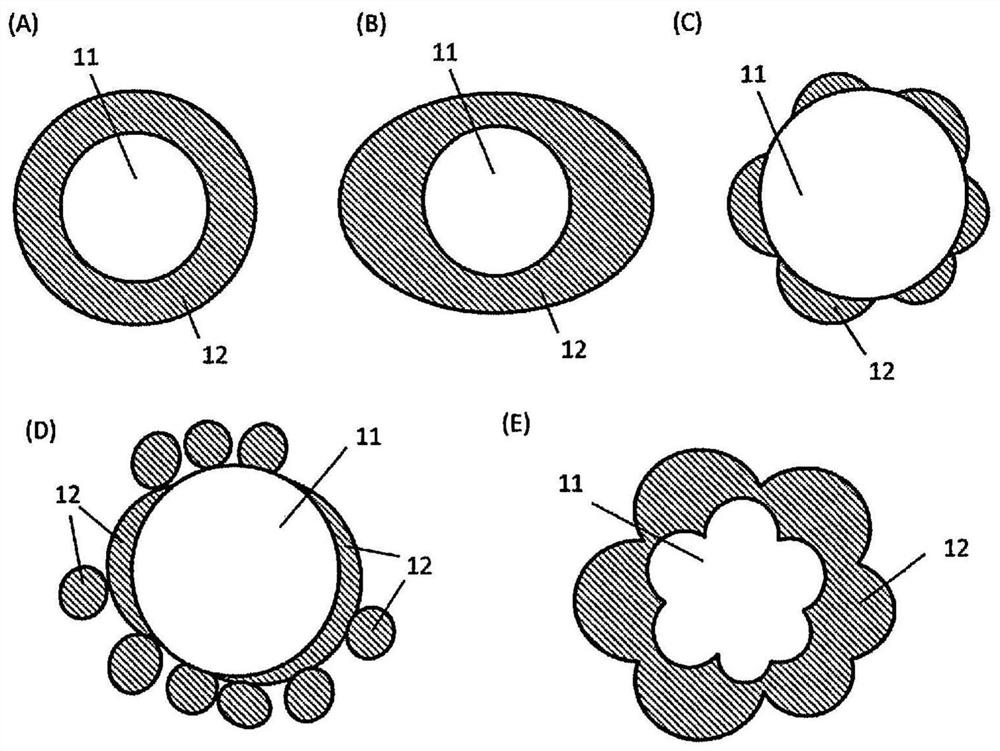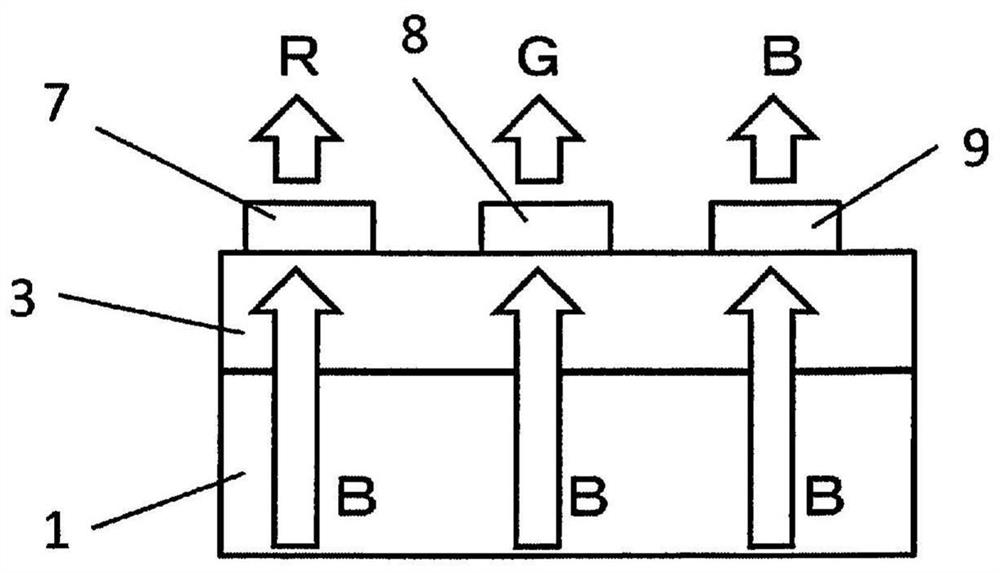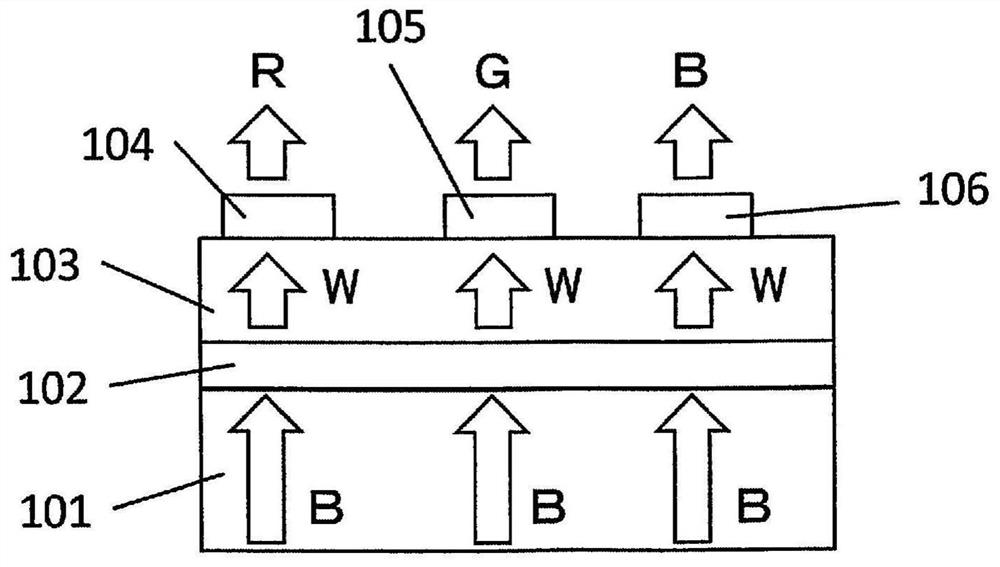Semiconductor nanoparticles, dispersion of semiconductor nanoparticles, and optical member
A nanoparticle and semiconductor technology, applied in nano optics, semiconductor devices, nanotechnology, etc., can solve the problems of difficult adjustment of luminescence wavelength, large change of luminescence wavelength, and low quantum efficiency, and achieve small Stokes shift and quantum efficiency The effect of small height and half peak width
- Summary
- Abstract
- Description
- Claims
- Application Information
AI Technical Summary
Problems solved by technology
Method used
Image
Examples
experiment example 1
[0162]
[0163] Add indium acetate (0.3mmol) and zinc oleate (0.6mmol) to a mixture of oleic acid (0.9mmol), 1-dodecylmercaptan (0.1mmol) and octadecene (10mL), under vacuum (<20Pa) heated to about 120°C and allowed to react for 1 hour. The mixture reacted under vacuum (<20 Pa) was placed at 25° C. under a nitrogen atmosphere, and tris(trimethylsilyl)phosphine (0.25 mmol) was added, then heated to 300° C. and allowed to react for 10 minutes. Further, the reaction liquid was cooled to 25° C., octanoyl chloride (0.45 mmol) was poured, and after heating at 250° C. for 30 minutes, it was cooled to 25° C. to obtain a dispersion solution of core particles.
[0164]
[0165] 40 mmol of zinc oleate and 75 mL of octadecene were mixed, and heated at 110° C. for 1 hour under vacuum to prepare a Zn precursor solution of [Zn]=0.4 M.
[0166] 22 mmol of selenium powder and 10 mL of trioctylphosphine were mixed in nitrogen, stirred until they were all dissolved, and trioctylphosphine se...
experiment example 2
[0181] The tris(trimethylsilyl)phosphine added when preparing the dispersion of the core particles was set to 0.20 mmol, the octanoyl chloride was set to 1.1 mmol, the Zn precursor added when the ZnSe shell was formed was set to 6.0 mL, and tris Octylphosphine selenide was set to 2.0mL, the Zn precursor added when forming the ZnS shell was set to 6.0mL, and trioctylphosphine sulfide was set to 1.8mL, except that, a semiconductor nanometer was prepared in the same manner as in Example 1. particle.
experiment example 3
[0183] The tris(trimethylsilyl)phosphine added when preparing the dispersion of the core particles was set to 0.10 mmol, the octanoyl chloride was set to 0.75 mmol, the Zn precursor added when the ZnSe shell was formed was set to 6.6 mL, and the tris Octylphosphine selenide was set to 2.2mL, the Zn precursor added when forming the ZnS shell was set to 4.0mL, and trioctylphosphine sulfide was set to 1.2mL, and a semiconductor nanometer was produced in the same manner as in Experimental Example 1. particle.
PUM
| Property | Measurement | Unit |
|---|---|---|
| thickness | aaaaa | aaaaa |
| thickness | aaaaa | aaaaa |
| quantum efficiency | aaaaa | aaaaa |
Abstract
Description
Claims
Application Information
 Login to View More
Login to View More - R&D
- Intellectual Property
- Life Sciences
- Materials
- Tech Scout
- Unparalleled Data Quality
- Higher Quality Content
- 60% Fewer Hallucinations
Browse by: Latest US Patents, China's latest patents, Technical Efficacy Thesaurus, Application Domain, Technology Topic, Popular Technical Reports.
© 2025 PatSnap. All rights reserved.Legal|Privacy policy|Modern Slavery Act Transparency Statement|Sitemap|About US| Contact US: help@patsnap.com



